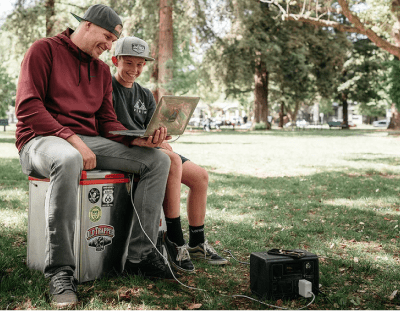Embarking on your solar power journey requires more than just solar panels—it demands a comprehensive understanding of the integrated system components that work together to capture, store, and deliver reliable power. Whether you're outfitting a caravan for weekend adventures or establishing an off-grid setup for extended outdoor living, knowing the essential elements of a solar power system is crucial for success. At Outbax, we specialise in providing quality components for complete solar solutions that meet the diverse needs of outdoor enthusiasts across Australia.
The Core Components of a Solar Power System
A functional solar power system relies on several key components working harmoniously to convert sunlight into usable electricity. Solar panels serve as the primary energy collectors, capturing sunlight and converting it to direct current (DC) electricity through photovoltaic cells. This generated power then passes through a solar charge controller, which plays the critical role of regulating voltage and current flowing to your batteries.
When choosing between controller types, understanding the distinction between MPPT (Maximum Power Point Tracking) and PWM (Pulse Width Modulation) controllers is essential—MPPT controllers offer superior efficiency by optimising power conversion in varying conditions, making them ideal for larger systems. PWM controllers, meanwhile, provide a cost-effective solution for smaller setups with consistent sunlight.
The battery bank forms the heart of your storage system, with options including deep-cycle AGM, gel, and the increasingly popular VoltX lithium (LiFePO4) batteries. Among these, LiFePO4 batteries offer significant advantages in weight, cycle life, and maintenance requirements, making them particularly valuable for caravan applications.
Finally, the inverter transforms stored DC electricity into standard alternating current (AC) power that your everyday appliances require. Pure sine wave inverters in particular, deliver a cleaner, more stable power necessary for sensitive electronics like laptops and medical devices.
Connecting and Mounting Your System
Proper connectivity between components ensures both system safety and optimal performance in your solar panel setup. Industry-standard MC4 connectors provide weather-resistant, secure connections between panels and controllers, while appropriate cable sizing prevents power loss and overheating during peak production periods.
Selecting the right gauge wire based on your system's amperage and distance is essential for maintaining voltage stability throughout the system. When it comes to mounting hardware, secure installation prevents weather damage and maximises solar exposure—whether you're installing panels on a caravan roof or creating a ground-mounted array for your campsite.
Quality mounting brackets and racking systems must withstand various environmental conditions while maintaining the optimal angle for solar collection, ensuring your investment in connecting solar panels to your battery bank delivers reliable power for years to come.
Essential Accessories for a Complete Setup
Beyond the primary components, several accessories enhance the functionality and safety of your solar power system. System monitoring tools provide valuable insights into battery health, charging efficiency, and power consumption patterns, allowing you to optimise usage and anticipate maintenance needs.
Properly rated fuses and circuit breakers protect your investment by preventing electrical damage from surges or short circuits, while additional cabling adaptors increase flexibility for different device connections. These solar panel accessories might seem secondary, but they significantly improve system reliability and user experience, especially in remote settings where troubleshooting options may be limited.
Building a reliable solar power system means bringing together quality components that work seamlessly. Here at Outbax, we offer a wide range of solar panel system components, including various solar panels, advanced solar charge controllers, inverters, and all the necessary wiring and accessories.
As a key part of any off-grid setup, we particularly focus on providing high-quality caravan batteries with multiple LiFePO4 battery options equipped with cutting-edge features for maximum performance, safety, and convenience. Our power solutions are designed to meet the unique requirements of recreational vehicles and camping adventures, ensuring you have dependable energy wherever your outdoor pursuits take you.
Conclusion
Creating an efficient and reliable solar power system requires a careful selection of compatible, quality components tailored to your specific power needs. From the initial solar panels that capture energy to the batteries that store it and the inverters that make it usable for everyday appliances, each element plays a vital role in your caravan solar setup.
Proper installation, secure connections, and appropriate sizing ensure both safety and optimal performance in varying conditions. By understanding these fundamental components and their interactions, you can confidently build an off-grid solar system that delivers consistent power for your outdoor adventures.
Explore Outbax's comprehensive range of solar system components and batteries to create your ideal power solution. Designed specifically for Australian conditions and the unique demands of outdoor living, our power equipment ensures your adventures are backed by eco-friendly, dependable power, wherever those adventure wheels take you.


